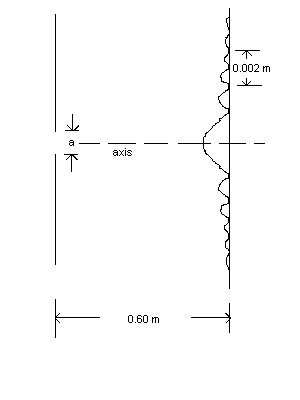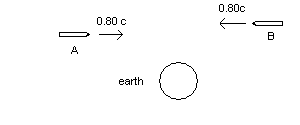
1.
(40 points) A thin film of cryolite (n = 1.35) of thickness d is applied to thick layer of oil (n = 1.25). See the diagram below. Assume the incident light traveling in water (n = 1.33), has wavelength 575 nm in a vaccum and is normal to the water-cryolite interface.
| Solutions: note that you must use n = 1.35 for the layer. (a) 2nd = (m + 1/2)*(575 nm ) with m = 0 so that d = 106 nm. (b) 2nd = m *575 nm so that d = 213 nm when m = 1. |
2. (40 points) A screen is placed 0.60 m from a single slit. The illumination light is of wavelength 690 nm.
(a) (20 points) If the distance from the 2nd to the 4th minimum in the diffraction pattern is 2.0 mm = 0.0020 m, then what is a, the slit width? Check out the diagram below.
(b) (20 points) Calculate the fractional intensity I/Io at a point on the screen 4.00 mm from the center of the main
principle maximum centered about the axis.

| Solutions: (a) y4 - y2 = 2(690 nm)*L/a = 0.002 m, so that a = 2(690 nm)*L/(y4 - y2) = 4.14x10-4 m (b) See problems 3 and 7 of Quiz 10. |
3. EC (9 points)Two small rockets A and B fly toward each other at speed 0.80 c relative to the earth.
(a) (3) What is the speed of A relative to B?
(b) (3) What is the speed of B relative to A?
(c) (3) Suppose the length of the rocket A relative to the A reference frame is 300 m. (This is called the proper length.) What is the length of rocket A relative to the B-reference frame?

| Solutions: (a) (0.8c + 0.8c)/(1 + 0.8*0.8) = 0.976 c (b) 0.976 c from symmetry. (c) L = 300*(1 - 0.976)2)1/2 = 65.9 m |